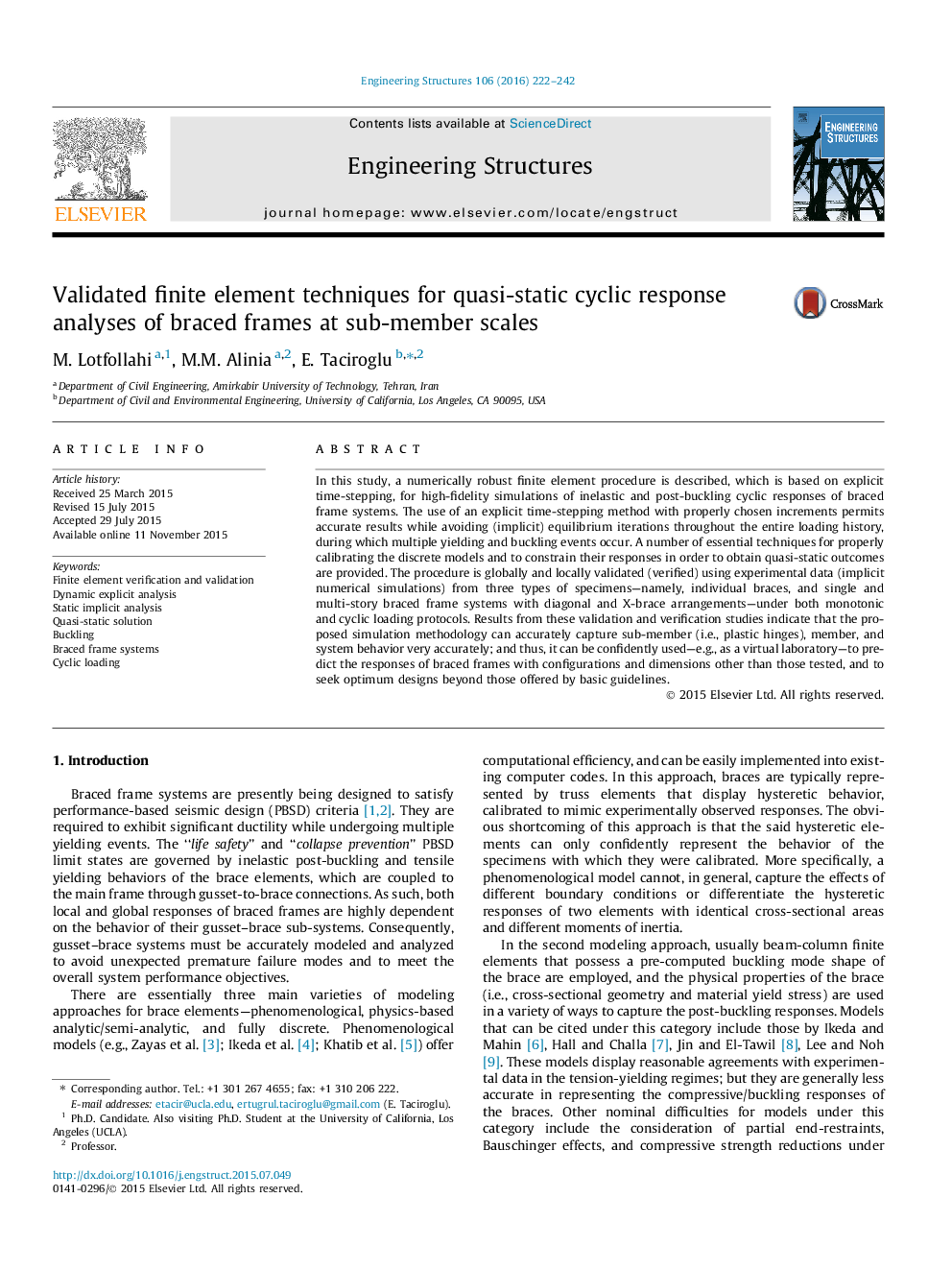| Article ID | Journal | Published Year | Pages | File Type |
|---|---|---|---|---|
| 265988 | Engineering Structures | 2016 | 21 Pages |
•A Cyclic Explicit Dynamic (CED) procedure is devised for inelastic analysis of braced frame systems.•Buckling and post-buckling responses via monotonic and cyclic loadings are accurately captured.•CED is validated/verified against experimental data and numerical results.•Yield mechanisms and formation of failure modes are recovered accurately by CED.•CED can be used to assess nonlinear performance and to seek the optimum design criteria.
In this study, a numerically robust finite element procedure is described, which is based on explicit time-stepping, for high-fidelity simulations of inelastic and post-buckling cyclic responses of braced frame systems. The use of an explicit time-stepping method with properly chosen increments permits accurate results while avoiding (implicit) equilibrium iterations throughout the entire loading history, during which multiple yielding and buckling events occur. A number of essential techniques for properly calibrating the discrete models and to constrain their responses in order to obtain quasi-static outcomes are provided. The procedure is globally and locally validated (verified) using experimental data (implicit numerical simulations) from three types of specimens—namely, individual braces, and single and multi-story braced frame systems with diagonal and X-brace arrangements—under both monotonic and cyclic loading protocols. Results from these validation and verification studies indicate that the proposed simulation methodology can accurately capture sub-member (i.e., plastic hinges), member, and system behavior very accurately; and thus, it can be confidently used—e.g., as a virtual laboratory—to predict the responses of braced frames with configurations and dimensions other than those tested, and to seek optimum designs beyond those offered by basic guidelines.
